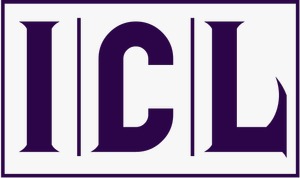Technology assisted teaching by using Vlogs and blogs
A Pakistani perspective
Keywords:
ELT, Vlog, Blog, teaching, open ended questionnaireAbstract
Methods and trends to teach the students of English language are changing widely with the passage of time. Technological programmes and computer-assisted softwares are taking place rapidly. These programmes help both teachers and learners. Use of ‘Blogs’ or ‘Weblog’ and ‘Vlog’ for language teaching facilitate language learning process. The present paper aims to analyze the
rationale of using Vlogs and Blogs for ELT practitioners. It furthers investigates the merits and demerits of its usage because technology has become an integral part of teaching. For this purpose, an open-ended questionnaire was disseminated to 20 ESL teachers. Through a qualitative study it was found that Vlogs improve students’ listening, pronunciation, and conversation skills while blogs allow its users to read and write materials. Instructors use it to read up to date material and motivate their students to learn in easy and effective way. Findings further prove that most of the participants use technology in different teaching activities and situations. These are more positive and a few negative impacts on teaching and learning English language. The study is significant because modern classrooms have different requirements than traditional classrooms and students prefer technology on notes and tough reading materials.
References
Alwehaibi, H. O. (2015). The impact of using YouTube in EFL classroom on enhancing EFL students’ content learning. Journal of College Teaching and Learning, 12(2), 121–126.
Campbell A. (2003). Weblogs for Use with ESL Classes. Internet TESOL Journal, (9) 2.
Chohan, M. N., Abbas, F., & Saleem, M. (2018). CALL as a tool in teaching EFL in Pakistani religious institutes (Madaris): A survey of issues and challenges. Al Qalam, 23(1), 355-368.
Christian, A. J. (2009). Real Vlogs: The rules and meanings of online personal videos. First Monday, 14(11), 1–18.
Dooly, M. (2015). Learning to e-function in a brave new world: language teachers’ roles in educating for the future. In A. Turula and B. Mikolajewska, (eds.) Insights into technology enhanced language pedagogy. Peter Lang AG. 11-25.
Downes S. (2009). Blogs in Learning. In S. Mishra (ed.). ELearning, STRIDE Handbook8. NewDelhi: Ians Publishing
Hussin, S., Aboswider, R.O.S., Ismail, N. & Yoke, S.K. (2016). Exploring Instructors' Rationaleand Perspectives in Using Blogs as a Tool for Teaching English as a Second Language. English Language Teaching, 9(10), 142-155.
Nunan D. (2004). Task-based Language Teaching. Cambridge: Cambridge University Press.
Oddone, C. (2012). Blogs, video blogs, audio blogs and language teaching. Italian Journal of Educational Technology, 20(2), 123-126. Ortona, Italy: Edizioni Menabò - Menabòsrl.
Raiskinmäki, J. (2017). The Use of Technological Devices in English Teaching as Experienced by Teachers. University of Jyväskylä journal.
Richardson, W. (2010). Blogs, wikis, podcasts and other powerful web tools for classrooms. Corwin, USA: Sage Ltd.
Saiful, J. (2019). EFL Teachers’ Cognition in the Use of Youtube Vlog in English Language Teaching. Journal of Foreign Language Education and Technology, 4(1).
Solomon G., Schrum L. (2007). Web 2.0. New tools, new schools. Washington DC: ISTE
Abbas, F., Jalil, M. K., Zaki, H. N., & Irfan, F. (2020). Implicit measure of language attitude: study of Punjabi native speakers by using matched guise technique. International Journal of Innovation, Creativity and Change, 13(1), 194-206.
Abbas, F., Pervaiz, A., & Arshad, F. (2018). The competing status of Urdu and English after declaration of Urdu as official language in Pakistan. Journal of Research (Urdu), 34(1), 142-158.
Abbas, F., & Iqbal, Z. (2018). Language Attitude of the Pakistani Youth towards English, Urdu and Punjabi: A Comparative Study. Pakistan Journal of Distance and Online Learning, 4(1), 199-214.
Thomas, M., Reinders, H. and Warschauer, M. (2012). Contemporary computer-assisted language learning: The role of digital media and incremental change. In M. Thomas, H. Reinders and M. Warschauer, Contemporary computer-assisted language learning Bloomsbury Publishing PLC. 21-31.
Tohill, K. (2007). Technology as a Facilitator of Second Language Acquisition. In R. Carlsen, K. McFerrin, J. Price, R. Weber & D. Willis (Eds.), Proceedings of SITE 2007--Society for Information Technology & Teacher Education International Conference (pp. 2894-2899). San Antonio, Texas, USA: Association for the Advancement of Computing in Education (AACE).
Watkins, J., & Wilkins, M. (2011). Using YouTube in EFL classroom. Language Education in Asia, 2(1), 113-119.
Zorko V. (2007). A rationale for introducing a wiki and a blog in a blended-learning context. CALL-EJ Online. 8 (2).
Downloads
Published
How to Cite
Issue
Section
License

This work is licensed under a Creative Commons Attribution-NonCommercial-NoDerivatives 4.0 International License.

